(Cherbourg 1818 - Lorient 1869)
The blessing of Coureau de Groix at Larmor
Oil on canvas
H. 60 cm; W. 100 cm
Signed and dated lower left, 1869
Exhibition: 1869, Salon de Paris, under number 1693, titled Le village de Laror (sic), the day of the blessing of couraux (sic) (Brittany)
Artillery captain in the Navy, Charles Merme travels the seas of the world on ships to carry him to distant lands. He will visit the Mediterranean, the Comoros, will remain stationed in Guadeloupe from 1863 to 1865, and fifteen years earlier he made a stopover of several years in Reunion. He will bring back many works of these lush landscapes which can be found today in several French museums. His attraction to the sea is logically found in the vast majority of his compositions. Amateur painter as a daily sailor, he nevertheless exhibited at the Salon from 1843, until the year of his death in 1869. It was also in this last year that Merme exhibited this large Breton canvas, but post-mortem. He actually died a month before the opening of the Salon of a foudroyant Anthrax (anthrax). Le Monde Illustré devotes an obituary to him which alludes to our painting: "he had just sent the jury two new paintings, which cannot fail to be noticed", and recalls his merits: "He excelled at rendering the horizons of the morning , and its skies had a brilliance and transparency that few painters have been able to render with so much skill and finesse ". Recognized by the Académie des Beaux-Arts, Merme benefits from lessons from Prosper Marilhat and Théodore Rousseau, he takes part in various regional exhibitions where he exhibits, as in Paris, works from his various trips. In 1859, Le Monde Illustré reproduced a work by Merme that he presented at the Salon that year, and made the following benevolent criticism: "... the transparency of its waters, the vigor and richness of its first plans , the lightness of its funds and the depth of its sky make of this simple and true study a precedent which engages the future of M. Merme. We will certainly find him at the first exhibition, more sure of himself, struggling with the most strong, and having acquired the difficult sympathy of the public. ". Charles Merme realizes here a grandiose canvas of a mythical moment that a small town in Morbihan brings to life every year on Saint John (June 23), near Lorient. On the beach of Port Maria, in Larmor, a procession advances towards the pier which embarks on various ships to reach a central point between the municipalities of Ploemeur, Larmor, Port-Louis and Gâvres, in the direction of the island of Groix more to the south. This area gives access to the port of Lorient and is called "Coureau de Groix". It is feared by sailors because of the strong force of the currents, particularly during high tides. It is these dangerous currents that the clergy of the five communes (including that of Groix) come to bless in the open sea, for the safety of sailors and the quality of their fishing. In 1843, Marteville and Varin described this blessing with a few omissions, but the tone was set: “This is where we make the most abundant sardine catch on all our coasts. It is also there that the blessing of fishing takes place every year, on Midsummer's Day. That day the population of Groix, clergy and banner in the lead, got into their boats and reached the middle of the coureau. For its part, the mainland population, part of the village of Armor with the clergy of Ploemeur, arrives by force of oars. The clergy meet in a single boat; the two parish crosses then bow towards each other and embrace. At this signal, the sailors 'songs burst out in unison and do not stop until the rector of Ploemeur gets up on one of the rowers' benches, and with a paternal gesture imposes silence on this noisy crowd. Prayers replace songs, holy water is launched at the four cardinal points, and the silence is such that one would hear this water fall into the sea. Each sailor prays in his heart and fervently implores the sky to give back abundant fishing which must give the existence to all his family. Finally the prayers cease, the banners bow again, the two clergy separate; the songs begin again and the boats return to the port where many libations come to end this day and take away its splendid and sublime character. »Our canvas perfectly depicts this departure from the mainland where the curious will stay on the rocks to get drunk on this visual and sound spectacle, which some will even watch with a telescope. Bourgeois as close as possible to the water, families of sailors or farmers behind.
Seven years earlier, the painter produced another version, reproduced in Le Monde Illustré, in 1862 (Fig. 1).







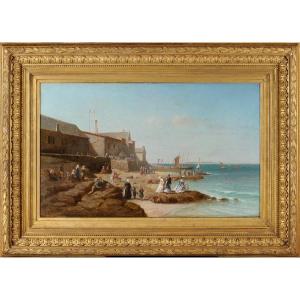









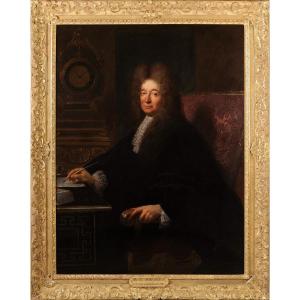
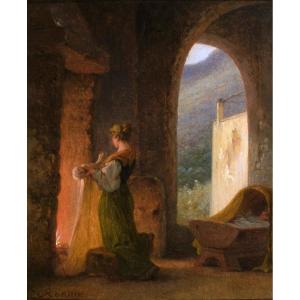




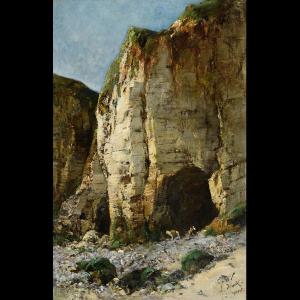


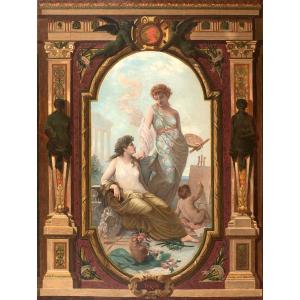
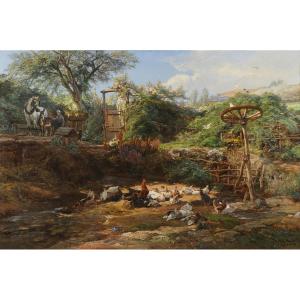
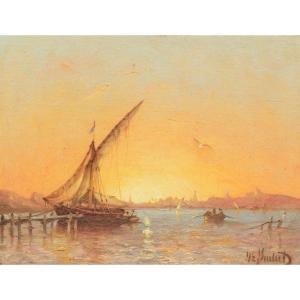
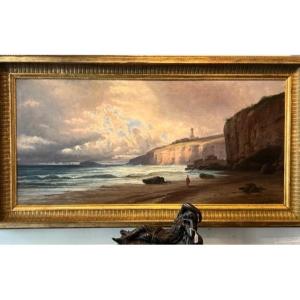
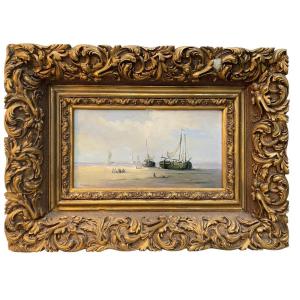





 Le Magazine de PROANTIC
Le Magazine de PROANTIC TRÉSORS Magazine
TRÉSORS Magazine Rivista Artiquariato
Rivista Artiquariato